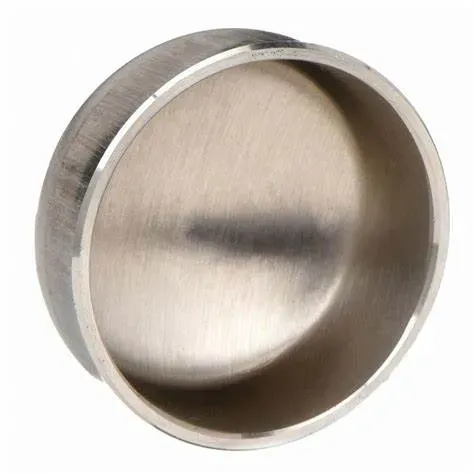-
Cangzhou Yulong Steel Co., Ltd.
-
Phone:
+86 13303177267 -
Email:
admin@ylsteelfittings.com
- English
- Arabic
- Italian
- Spanish
- Portuguese
- German
- kazakh
- Persian
- Greek
- French
- Russian
- Polish
- Thai
- Indonesian
- Vietnamese
- Zulu
- Korean
- Uzbek
- Hindi
- Serbian
- Malay
- Ukrainian
- Gujarati
- Haitian Creole
- hausa
- hawaiian
- Hebrew
- Miao
- Hungarian
- Icelandic
- igbo
- irish
- Japanese
- Javanese
- Kannada
- Khmer
- Rwandese
- Afrikaans
- Albanian
- Amharic
- Armenian
- Azerbaijani
- Basque
- Belarusian
- Bengali
- Bosnian
- Bulgarian
- Catalan
- Cebuano
- China
- China (Taiwan)
- Corsican
- Croatian
- Czech
- Danish
- Esperanto
- Estonian
- Finnish
- Frisian
- Galician
- Georgian
- Kurdish
- Kyrgyz
- Lao
- Latin
- Latvian
- Lithuanian
- Luxembourgish
- Macedonian
- Malgashi
- Malayalam
- Maltese
- Maori
- Marathi
- Mongolian
- Myanmar
- Nepali
- Norwegian
- Norwegian
- Occitan
- Pashto
- Dutch
- Punjabi
- Romanian
- Samoan
- Scottish Gaelic
- Sesotho
- Shona
- Sindhi
- Sinhala
- Slovak
- Slovenian
- Somali
- Sundanese
- Swahili
- Swedish
- Tagalog
- Tajik
- Tamil
- Tatar
- Telugu
- Turkish
- Turkmen
- Urdu
- Uighur
- Welsh
- Bantu
- Yiddish
- Yoruba

Oct . 30, 2024 19:53 Back to list
api 5l x52 specification
API 5L X52 Specification An Overview
The API 5L X52 specification is a crucial standard in the pipeline industry, primarily governed by the American Petroleum Institute (API). This specification outlines the requirements for the manufacture of line pipe suitable for transporting gas, water, and oil in both the oil and natural gas industries. The X52 grade represents a specific strength level within the API 5L specification, indicating that the pipe is capable of enduring higher pressures while maintaining structural integrity.
Composition and Mechanical Properties
The X52 pipe is characterized by its carefully controlled chemical composition, which typically includes carbon (C), manganese (Mn), phosphorus (P), sulfur (S), and silicon (Si). The maximum carbon content for X52 steel is usually set to 0.22% to ensure weldability and ductility. Manganese, present at about 1.2% to 1.6%, enhances the strength and hardness of the steel, acting as a deoxidizer during the manufacturing process.
Mechanical properties are critical for any line pipe, and in the case of X52, it must meet specific yield strength criteria. The minimum yield strength for X52 pipes is 52,000 psi (pounds per square inch), making them suitable for high-pressure applications. Furthermore, the tensile strength should range between 65,000 to 80,000 psi, demonstrating its robustness under various operational conditions.
Manufacturing Process
api 5l x52 specification

The manufacturing of API 5L X52 pipes involves advanced techniques such as hot rolling or cold forming. The production process is tightly regulated to ensure that each pipe meets the stringent standards set forth in the API 5L specification. This includes rigorous testing for dimensional accuracy and surface quality, as well as non-destructive testing methods to detect any internal defects.
Applications of X52 Pipes
API 5L X52 pipes are widely used in various industries, including oil and gas, water transport, and thermal power generation. Their ability to handle high pressure makes them an ideal choice for transporting crude oil and natural gas in pipelines that traverse vast distances. Additionally, these pipes are utilized in the construction of offshore platforms and oil rigs, where durability and corrosion resistance are paramount.
Conclusion
In conclusion, the API 5L X52 specification plays a vital role in ensuring the reliability and safety of pipelines used in the energy sector. With its defined mechanical properties and rigorous manufacturing standards, X52 pipes not only meet but often exceed the expectations of industry requirements. As demand for energy continues to grow, adherence to such specifications ensures that infrastructure remains both effective and secure, facilitating the efficient transport of vital resources across the globe. Understanding the intricacies of API 5L X52 is essential for engineers, manufacturers, and anyone involved in the pipeline construction and maintenance industry, as it lays the groundwork for sustained operational success.
Latest news
-
ANSI 150P SS304 SO FLANGE
NewsFeb.14,2025
-
ASTM A333GR6 STEEL PIPE
NewsJan.20,2025
-
ANSI B16.5 WELDING NECK FLANGE
NewsJan.15,2026
-
ANSI B16.5 SLIP-ON FLANGE
NewsApr.19,2024
-
SABS 1123 FLANGE
NewsJan.15,2025
-
DIN86044 PLATE FLANGE
NewsApr.19,2024
-
DIN2527 BLIND FLANGE
NewsApr.12,2024
-
JIS B2311 Butt-Welding Fittings LR/SR 45°/90° /180°Seamless/Weld
NewsApr.23,2024











